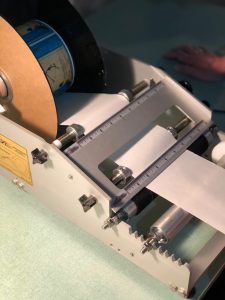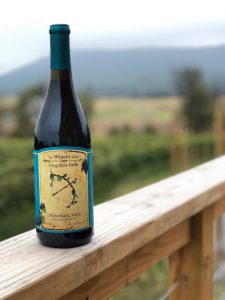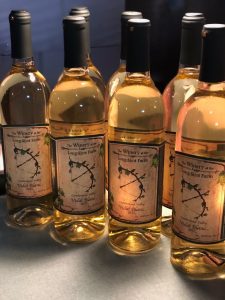 Cork is a sustainably harvested product that is natural, renewable and recyclable. Cork forests support high levels of biodiversity and prevent desertification in the Mediterranean region , where most of these forests are found. Additionally, cork oak trees store carbon in order to regenerate their bark. According to WWF, a harvested cork oak tree absorbs up to five times more carbon than one that is not, and cork forests absorb millions of tons of CO2 each year. With a global decline in the natural cork use for wine, cork trees are being lost and countries are experiencing desertification, which also threatens the habitats of some critically endangered species, like the Iberian Lynx in Portugal.
Cork is a sustainably harvested product that is natural, renewable and recyclable. Cork forests support high levels of biodiversity and prevent desertification in the Mediterranean region , where most of these forests are found. Additionally, cork oak trees store carbon in order to regenerate their bark. According to WWF, a harvested cork oak tree absorbs up to five times more carbon than one that is not, and cork forests absorb millions of tons of CO2 each year. With a global decline in the natural cork use for wine, cork trees are being lost and countries are experiencing desertification, which also threatens the habitats of some critically endangered species, like the Iberian Lynx in Portugal.
Let’s start with a brief summary of the types of wine bottle closures:
Natural Corks
Natural cork has several advantages, it is a natural product, it is porous and traditionalists will say that cork creates the perfect oxygen/wine ratio for cellar aging. The oxygen transfer rate of natural cork is approximately 0.0179 mg/L or between 3.00 and 6.83 micrograms of O2/day. Cork is also recyclable and cork forests contribute to biodiversity and prevent desertification of the Mediterranean region. A high quality cork offers long term aging potential, though with very high end wines it is recommended to re-cork after 25 years, as the cork will start to fail at that time.
But there are some major disadvantages, including problems with leakage as well as sources of off-odors. Leakages can be caused by structural imperfections of the cork itself, of it could be caused by wrongly aligning the cork and bottle during the corking process. Rapid temperature changes may also cause leakage. Another serious problem with cork is the possibility of off odors, including TCA (Trichloroanisole), as well as microbial growth from a variety of sources.
Concerns about structural imperfections of corks as well as cork taints have been the major reason for the development of alternative closures.
Synthetic Corks
Synthetic corks are inexpensive, they are consistent and they will never have the taint issues of real cork. They can also be used without the need for new bottling equipment. However, plastic allows the diffusion of oxygen at varying levels, ranging from 0.0052 cc/day to 0.0076 cc/day, while other evaluations of synthetic cork show diffusion from 5.7 to 13.99 micrograms of O2/day. Oxidation of wines under a synthetic cork can be observed as early as in a year, though ongoing research is addressing this issue. Plastics are not generally a renewable resource.
Screw Caps
Metal screwcaps are a major alternative to cork when it comes to closures. The metal cap itself is not the actual closure; rather the bottle is sealed with a plastic foam pad that is either lined with saran and a tin layer, or saranex only. A main advantage of these closures is that they are very consistent; they are great at retaining SO2 and they minimize oxidation. They are pilfer proof, and eliminate the need for a cork screw. There is no risk of TCA and the bottles do not need to lie on their sides.
There is some research suggesting that screw caps may lead to reduction in wine (the opposite of oxidation.) And there is still disagreement as to the aging potential of wine closed with a screw cap. Another disadvantage is the cost of investing in a capping machine, which starts around $8000. The various types of screw caps in the market are not standardized so a capping machine is specific to one type of screw cap only.
“Engineered” or “Technical” Corks
A technical or engineered cork is basically made of shredded natural cork that is then “glued” back together and molded into the traditional cork shape. This type of cork provides all the advantages of natural cork, but eliminates the problems of cork taint (from musty smells to TCA) and inconsistencies with oxygen permeation caused by technical imperfections. Different grades of cork are used in this process, which – just as with the natural cork – influences the number of years that the cork is guaranteed for. This typically ranges from 2, 3, 5 and 10 years.
Regarding overall market perceptions, cork closures are still the preferred method of closures in the US for all wines, but even in countries where alternative closures are well accepted, many wineries opt to use traditional cork closures.
When deciding about the best wine closure, the overall environmental impact should not be underestimated! Cork is a sustainably harvested product. It is produced primarily by the Cork Oak (Quercus suber), but the tree does not get cut down in order to harvest the cork. The cork oak is the only tree, where all the bark can be stripped without harming the trunk. Harvesting cork starts when a tree is around 30 years old, and is repeated every 10 years or so – for about 200 years per tree.
We know that by using natural cork, we are helping save cork trees in Portugal, across Europe, and in the Mediterranean region!
Here are some links where you can learn more about how corks are sustainably harvested and the importance of cork trees:
Cork Forest Conservation Alliance
“Save a Tree, Use Real Cork” The New York Times, 2013
Cork Quality Council
Posted by The Long Shot Farm


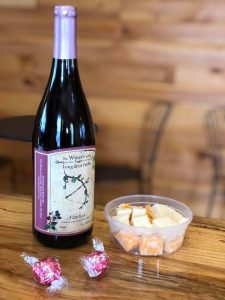

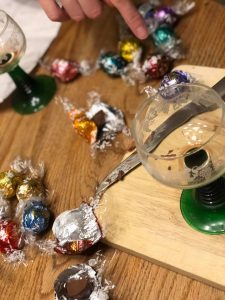
 Cork is a sustainably harvested product that is natural, renewable and recyclable. Cork forests support high levels of biodiversity and prevent desertification in the Mediterranean region , where most of these forests are found. Additionally, cork oak trees store carbon in order to regenerate their bark. According to WWF, a harvested cork oak tree absorbs up to five times more carbon than one that is not, and cork forests absorb millions of tons of CO2 each year. With a global decline in the natural cork use for wine, cork trees are being lost and countries are experiencing desertification, which also threatens the habitats of some critically endangered species, like the Iberian Lynx in Portugal.
Cork is a sustainably harvested product that is natural, renewable and recyclable. Cork forests support high levels of biodiversity and prevent desertification in the Mediterranean region , where most of these forests are found. Additionally, cork oak trees store carbon in order to regenerate their bark. According to WWF, a harvested cork oak tree absorbs up to five times more carbon than one that is not, and cork forests absorb millions of tons of CO2 each year. With a global decline in the natural cork use for wine, cork trees are being lost and countries are experiencing desertification, which also threatens the habitats of some critically endangered species, like the Iberian Lynx in Portugal.